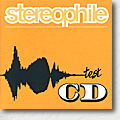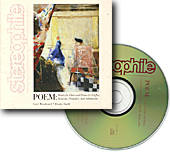LATEST ADDITIONS
Elgar's Enigma
The hidden theme of Elgar's <I>Enigma Variations</I> has been sufficiently investigated over the past 90 years to deter all but the most intrepid researcher from tackling the problem yet again. I would not venture to do so unless I were convinced that a well-argued attempt to solve the mystery once and for all had not been unfairly brushed aside, even ignored, a dozen or so years ago.
Sounding Off!
"Hoom! Hoom-hoom! <I>HOOM!</I>"
Accentuate the Positive?
<I>"You'll wonder where the yellow went, when you brush your teeth with Pepsodent."</I>
Take Me to Your LEDR!
"My system has great imaging!" "I can hear sound coming from beyond my speakers." "The depth image in my system goes back at least 20 feet." Yes, we audiophiles are proud of our imaging (footnote 1), and we've worked hard to get it. My back is still aching from the last time I tweaked my speakers until the image was <I>just right</I>.
An Amplifier Listening Test
It is always a matter of great interest when a difficult question, in this case the audibility of differences between amplifiers, is put to an empirical test. When the question is tested by such intelligent, knowledgeable, and unbiased investigators as <A HREF="http://www.stereophile.com//features/113/">John Atkinson and Will Hammond</A> (see the July issue of <I>Stereophile</I>, Vol.12 No.7, p.5, the interest is even greater. Unfortunately, when the test turns out to have been flawed by errors in design and in use of statistics, as was the case here, the disappointment is also even greater.
Poem: Stereophile Cuts an LP
Why had a high-end hi-fi magazine felt the need to produce a classical <I>LP</I> when the thrust of real record companies in 1989 is almost exclusively toward CD and cassette? Why did the magazine's editors think they had a better chance than most experienced professional engineers in making a record with audiophile sound quality? Were they guilty of <I>hubris</I> in thinking that the many years between them spent practicing the profession of critic would qualify them as record producers?
Must We Test? Yes, We Must!
"Test We Must," cried <I>High Fidelity</I>'s erstwhile editor, Michael Riggs, in a January 1989 leader article condemning the growth of subjective testing. (See the sidebar for Peter Mitchell's obituary of <I>HF</I> magazine, now effectively merged with <I>Stereo Review</I>.) With the exception of loudspeakers, where it is still necessary to listen, he wrote, "laboratory testing (properly done) can tell us pretty much everything we need to know about the performance of a typical piece of electronics...We know what the important characteristics are, how to measure them, and how to interpret the results."
A Matter of Dimensions
The Chicken and the Egg
It is inarguable that the quality of magnetically recorded sound has improved immeasurably in the last 101 years. 101 years? Yes, according to a fascinating account in the May 1988 issue of the <I>Journal of the Audio Engineering Society</I>, it was in 1888 that the Cincinnatti-based engineer Oberlin Smith experimented with recording information on steel wire by drawing it across the corner of an electromagnet around which a coil had been wound. Smith only carried out experiments without producing a practical recording system, and it wasn't until 1898 that the Dane, Valdemar Poulsen, was granted a German patent for a "Method for the reception of news, signals, and the like."


